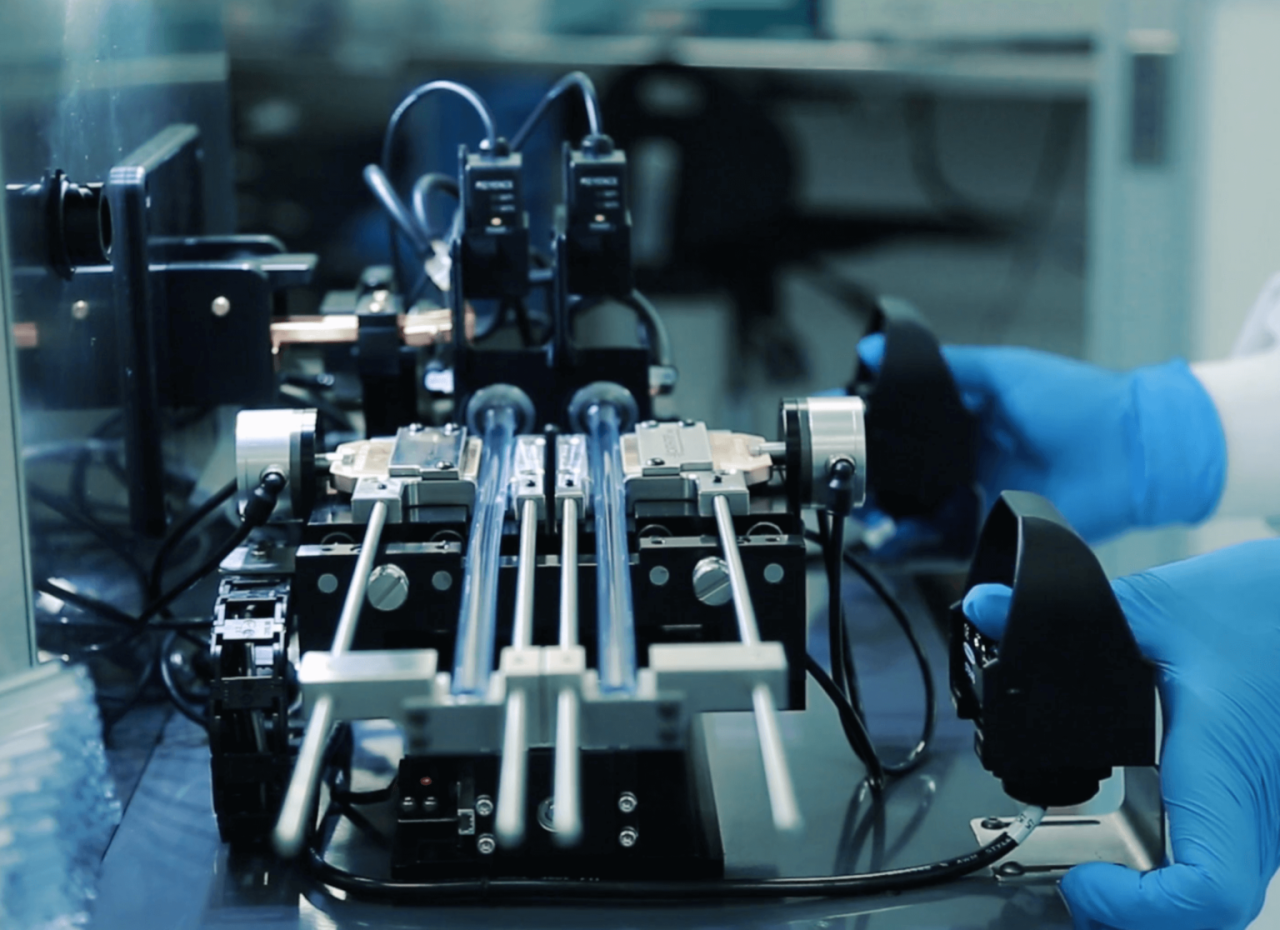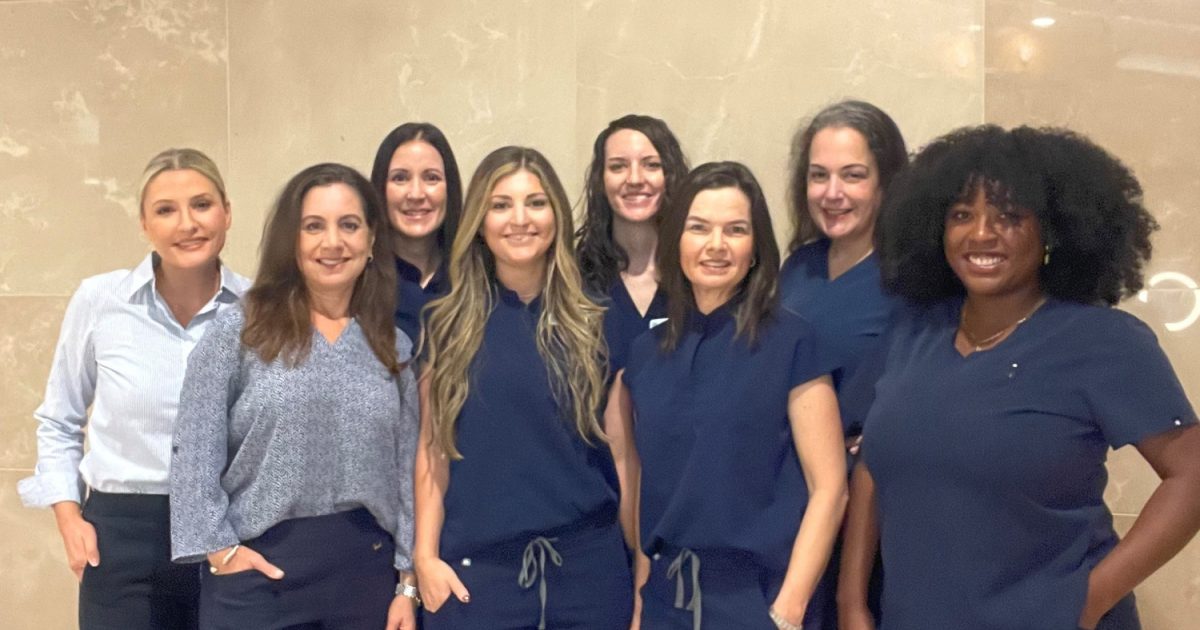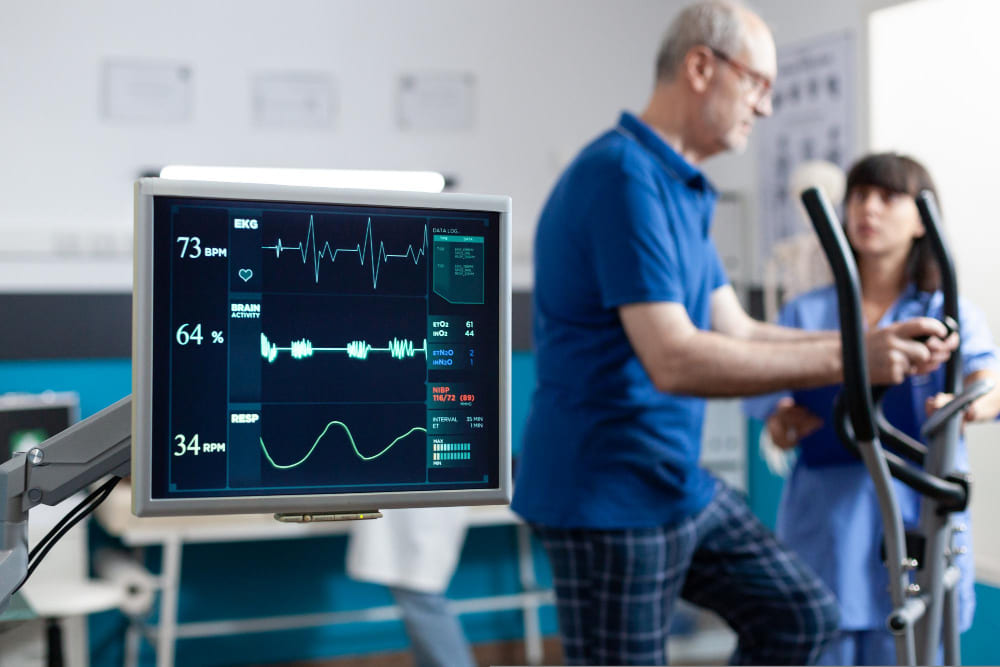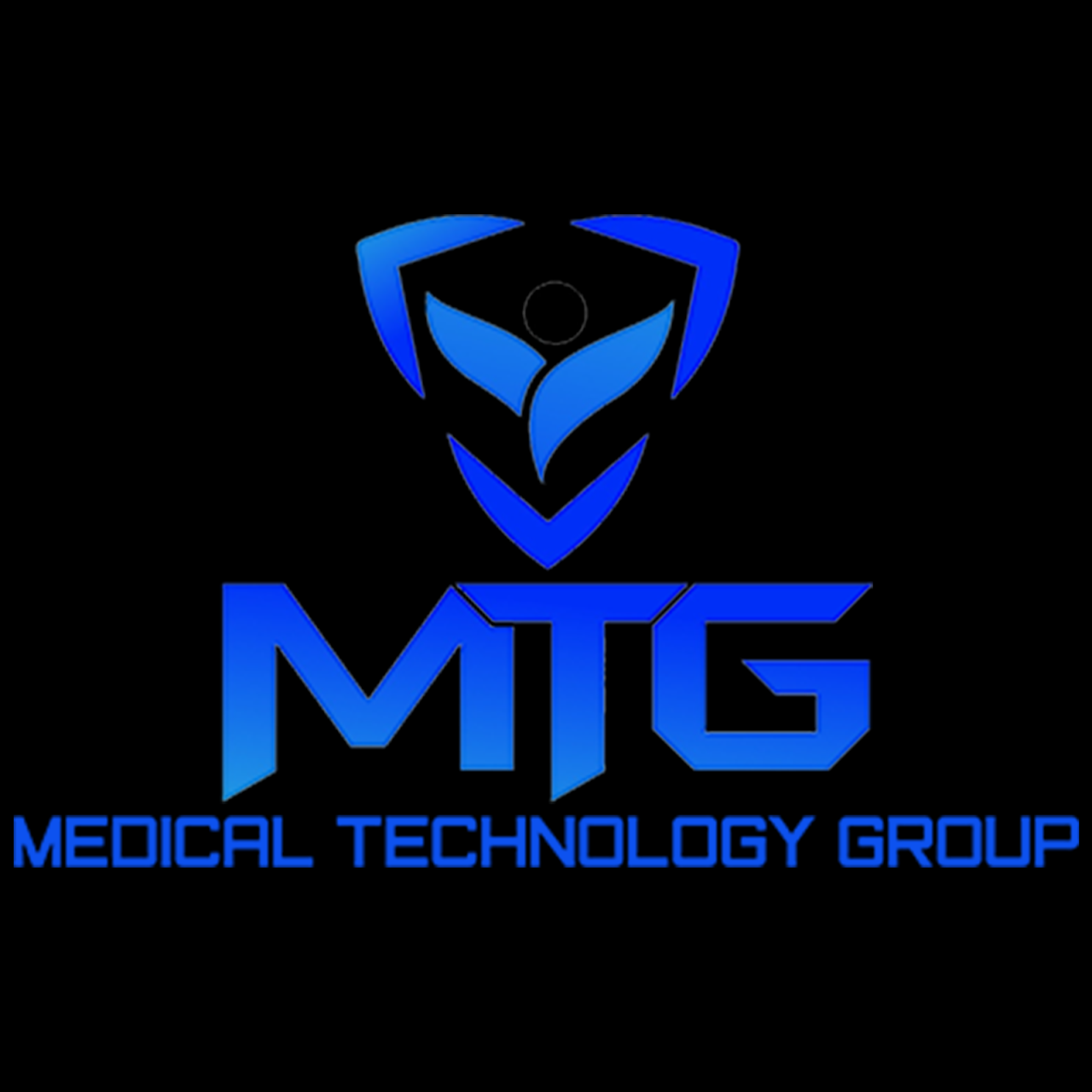Intro to Surgical Technology: A Guide to the Operating Room
Intro to surgical technology takes center stage, introducing you to the vital role of surgical technologists in the operating room. These skilled professionals are essential members of the surgical team, […]

Intro to surgical technology takes center stage, introducing you to the vital role of surgical technologists in the operating room. These skilled professionals are essential members of the surgical team, ensuring a smooth and successful procedure. From preparing the operating room and sterilizing instruments to assisting surgeons and managing patient care, surgical technologists play a crucial role in modern healthcare.
This comprehensive guide explores the multifaceted world of surgical technology, delving into educational pathways, essential skills, the operating room environment, surgical instruments, common procedures, and the importance of professional development. Prepare to gain a deeper understanding of this dynamic and rewarding field.
What is Surgical Technology?

Surgical technology is a specialized healthcare profession that plays a vital role in the safe and efficient delivery of surgical care. Surgical technologists are highly trained professionals who work closely with surgeons and other members of the surgical team to ensure a smooth and successful surgical procedure.
Role of a Surgical Technologist
Surgical technologists are responsible for preparing the operating room, sterilizing instruments, and assisting surgeons during surgery. They are also responsible for maintaining a sterile environment and ensuring the safety of the patient and the surgical team.
Responsibilities and Tasks of a Surgical Technologist
The responsibilities and tasks of a surgical technologist are multifaceted and critical to the success of surgical procedures.
- Preparing the Operating Room: Surgical technologists prepare the operating room by setting up the surgical instruments, supplies, and equipment. They ensure that the operating room is sterile and that all necessary equipment is functioning properly. This includes preparing the surgical field, arranging equipment and instruments, and ensuring proper lighting and ventilation.
- Sterilizing Instruments: Surgical technologists sterilize all surgical instruments and supplies using various methods, such as steam sterilization, gas sterilization, or chemical sterilization. They follow strict protocols to ensure that all instruments are completely sterile and free of bacteria. This is crucial to prevent infections and ensure patient safety.
- Assisting Surgeons During Surgery: During surgery, surgical technologists assist surgeons by handing them instruments, preparing sutures, and providing other support. They also monitor the patient’s vital signs and ensure that the surgical team has the necessary supplies and equipment. They anticipate the surgeon’s needs and ensure a smooth workflow during the procedure.
- Maintaining a Sterile Environment: Surgical technologists are responsible for maintaining a sterile environment in the operating room. They wear sterile gowns and gloves, and they follow strict protocols to prevent contamination. They monitor the environment for any potential breaches in sterility and take immediate action to correct them.
- Ensuring Patient Safety: Surgical technologists play a crucial role in ensuring patient safety. They monitor the patient’s vital signs, ensure that the patient is properly positioned, and assist in the transfer of the patient to and from the operating room. They also ensure that all instruments and equipment are functioning properly and that the surgical team is following proper safety protocols.
Importance of Surgical Technology in Modern Healthcare
Surgical technology is an essential component of modern healthcare. Surgical technologists are highly skilled professionals who play a vital role in the success of surgical procedures. They are responsible for preparing the operating room, sterilizing instruments, assisting surgeons, and ensuring patient safety. The importance of surgical technology can be seen in the following aspects:
- Improved Patient Outcomes: Surgical technologists contribute significantly to improved patient outcomes by ensuring that surgical procedures are performed safely and efficiently. Their expertise in sterile technique and instrument handling helps to minimize the risk of infections and complications.
- Increased Efficiency in the Operating Room: Surgical technologists streamline surgical procedures by anticipating the needs of the surgical team and ensuring that all necessary instruments and supplies are readily available. This efficiency helps to reduce surgical time and improve patient care.
- Enhanced Patient Safety: Surgical technologists are vigilant in maintaining a sterile environment and ensuring that all safety protocols are followed. Their dedication to patient safety helps to minimize the risk of surgical errors and complications.
Educational Pathways
Becoming a surgical technologist requires specialized education and training. There are several educational pathways available, each offering different levels of depth and specialization.
Aspiring surgical technologists can choose from associate degrees, certificate programs, and bachelor’s degrees. The chosen path will depend on individual goals, career aspirations, and the specific requirements of the state where they plan to work.
Associate Degrees
Associate degrees in surgical technology are the most common educational pathway. These programs typically take two years to complete and offer a comprehensive curriculum that covers the essential knowledge and skills required for surgical technology.
- Curriculum: Associate degree programs typically cover topics such as surgical anatomy and physiology, surgical instrumentation, sterilization techniques, surgical procedures, and operating room safety. They also include hands-on training in simulated and real-world surgical settings.
- Requirements: Admission requirements for associate degree programs typically include a high school diploma or equivalent, and may include prerequisite courses in biology, chemistry, and anatomy.
- Accreditation: Accredited programs are essential for ensuring that graduates meet the standards of the profession. The Accreditation Review Council on Education in Surgical Technology and Surgical Assisting (ARC/STSA) is the primary accrediting body for surgical technology programs. Choosing an accredited program is crucial, as it increases the likelihood of finding employment and meeting the requirements for certification.
Certificate Programs
Certificate programs in surgical technology offer a shorter, more focused pathway for those who already have some healthcare experience or want to quickly enter the field. These programs typically take less than two years to complete and focus on the essential skills and knowledge required for surgical technology.
An introduction to surgical technology delves into the fascinating world of operating rooms, where precision and expertise are paramount. Understanding the intricate instruments and procedures requires a strong foundation in medical knowledge and a keen eye for detail. As technology advances, so too do the tools and techniques employed in surgery, with innovative advancements like advert technologies playing a crucial role in improving patient outcomes and enhancing surgical precision.
The field of surgical technology continues to evolve, offering exciting opportunities for those seeking a career in healthcare that blends technical skills with a commitment to patient well-being.
- Curriculum: Certificate programs generally cover topics such as surgical instrumentation, sterilization techniques, surgical procedures, and operating room safety. They may also include hands-on training in simulated and real-world surgical settings.
- Requirements: Admission requirements for certificate programs may vary, but often include a high school diploma or equivalent, and may require previous healthcare experience.
- Accreditation: Accreditation is also important for certificate programs. The ARC/STSA accredits some certificate programs, ensuring they meet the standards of the profession.
Bachelor’s Degrees
Bachelor’s degrees in surgical technology are becoming increasingly popular, offering a more advanced education and broader career opportunities. These programs typically take four years to complete and provide a comprehensive understanding of the field.
- Curriculum: Bachelor’s degree programs build upon the foundation of associate degree programs, covering advanced topics such as surgical research, leadership, and management. They also often include opportunities for internships and research projects.
- Requirements: Admission requirements for bachelor’s degree programs typically include a high school diploma or equivalent, and may include prerequisite courses in biology, chemistry, and anatomy. Some programs may also require a minimum GPA or standardized test scores.
- Accreditation: Accreditation is crucial for bachelor’s degree programs as well. The ARC/STSA accredits some bachelor’s degree programs, ensuring they meet the standards of the profession.
Skills and Knowledge
Surgical technologists require a unique blend of skills and knowledge to effectively support surgical procedures. They are highly trained professionals who work closely with surgeons and other members of the surgical team to ensure a safe and successful operation.
Technical Proficiency
Technical proficiency is paramount in surgical technology. Surgical technologists must possess a deep understanding of surgical instruments, equipment, and supplies. They need to be able to handle delicate instruments with precision, assemble and sterilize equipment, and prepare the operating room efficiently. Their ability to anticipate the surgeon’s needs and provide the right tools at the right time is crucial for a smooth surgical workflow.
- Instrument Identification and Handling: Surgical technologists must be able to identify and handle a wide range of surgical instruments, including forceps, clamps, retractors, and scalpels. They need to understand the purpose and function of each instrument and how to use it safely and effectively.
- Equipment Assembly and Sterilization: Assembling and sterilizing surgical equipment is a critical task for surgical technologists. They must follow strict protocols to ensure that all equipment is properly cleaned, assembled, and sterilized to prevent infections. This involves understanding the principles of sterilization, using appropriate sterilization methods, and maintaining a sterile field.
- Surgical Procedures: Surgical technologists must have a comprehensive understanding of different surgical procedures, including the steps involved, the instruments used, and the potential complications. They need to be able to anticipate the surgeon’s needs and prepare the operating room accordingly.
Sterile Technique, Intro to surgical technology
Maintaining a sterile environment is essential in the operating room to prevent infections. Surgical technologists play a vital role in upholding strict sterile technique, ensuring that all instruments, supplies, and personnel are free from contamination. They are responsible for creating and maintaining a sterile field, scrubbing in, and gowning and gloving themselves and other members of the surgical team.
- Sterile Field Maintenance: The surgical technologist is responsible for creating and maintaining a sterile field, which is a designated area in the operating room where all instruments, supplies, and personnel are free from contamination. They must follow strict protocols to prevent the introduction of microorganisms into the field, such as using sterile drapes, handling instruments with sterile gloves, and avoiding touching non-sterile surfaces.
- Scrubbing and Gowning: Before entering the operating room, surgical technologists must scrub their hands and arms thoroughly with an antiseptic solution to remove any microorganisms. They then don a sterile gown and gloves to maintain a sterile barrier between themselves and the patient.
- Sterile Supply Handling: Surgical technologists must handle all sterile supplies with care to avoid contamination. They must use sterile gloves, forceps, and other instruments to transfer supplies to the sterile field and ensure that they remain sterile throughout the procedure.
Teamwork
Surgical technologists work as an integral part of a multidisciplinary team, collaborating with surgeons, nurses, anesthesiologists, and other healthcare professionals. Effective teamwork is crucial for successful surgical outcomes. They must communicate effectively with the team, anticipate the surgeon’s needs, and provide timely assistance during procedures.
- Communication: Clear and concise communication is essential in the operating room. Surgical technologists must be able to communicate effectively with the surgeon and other members of the team, providing updates on the status of the procedure, anticipating the surgeon’s needs, and reporting any potential issues.
- Collaboration: Surgical technologists work closely with the surgeon and other members of the surgical team. They must be able to anticipate the surgeon’s needs, prepare the necessary instruments and supplies, and provide timely assistance during the procedure. They also need to be able to work effectively with other members of the team, such as nurses and anesthesiologists, to ensure a smooth and efficient surgical workflow.
- Problem-Solving: Surgical technologists must be able to identify and solve problems that may arise during procedures. They must be able to think critically and make quick decisions in stressful situations. They also need to be able to communicate effectively with the surgeon and other members of the team to resolve any issues that may arise.
Anatomy, Physiology, and Surgical Procedures
Surgical technologists need a strong foundation in anatomy, physiology, and surgical procedures. They must understand the structure and function of the human body, the principles of surgical procedures, and the potential complications that can arise. This knowledge enables them to anticipate the surgeon’s needs, prepare the operating room appropriately, and assist with the procedure effectively.
- Anatomy: Surgical technologists must have a thorough understanding of human anatomy, including the skeletal system, muscular system, nervous system, and organ systems. They need to know the location and function of different organs and tissues, and how they are interconnected.
- Physiology: Surgical technologists must understand the physiological processes that occur in the body, such as respiration, circulation, and digestion. They need to know how these processes are affected by surgery and how to monitor the patient’s vital signs during procedures.
- Surgical Procedures: Surgical technologists must be familiar with a wide range of surgical procedures, including the steps involved, the instruments used, and the potential complications. They need to be able to anticipate the surgeon’s needs and prepare the operating room accordingly.
The Operating Room Environment
The operating room (OR) is a highly specialized and controlled environment designed to facilitate surgical procedures. It’s a place where medical professionals collaborate to provide safe and effective patient care. The OR environment is crucial to the success of surgery, and its layout, equipment, and personnel all play important roles in ensuring a positive outcome for patients.
Operating Room Layout
The OR is typically a large, rectangular room with a central operating table. The layout is designed to optimize workflow and minimize the risk of contamination. The room is divided into distinct zones, each with its own purpose and access restrictions.
- Sterile Zone: This is the area immediately around the operating table where surgical instruments, supplies, and the surgical team must remain sterile.
- Semi-Sterile Zone: This zone surrounds the sterile zone and is where scrubbed surgical personnel can move freely. It’s also where anesthesia equipment and monitoring devices are located.
- Non-Sterile Zone: This is the outermost zone of the OR and is where non-scrubbed personnel, such as nurses and circulating nurses, can move freely. This zone typically includes the patient’s family waiting area, and storage for supplies and equipment.
Operating Room Equipment
The OR is equipped with a wide array of specialized equipment designed to support surgical procedures. This equipment is essential for providing optimal patient care and ensuring the success of the surgery.
- Operating Table: This is the central piece of equipment in the OR, where the patient is positioned for surgery. Operating tables are designed to be adjustable and can be moved into various positions to facilitate different surgical procedures.
- Anesthesia Machine: This machine is used to deliver anesthetic gases and monitor the patient’s vital signs during surgery. Anesthesia machines are equipped with various monitoring devices, such as heart rate monitors, blood pressure monitors, and oxygen saturation monitors.
- Surgical Lights: These lights provide a bright, focused light source for the surgical field, allowing the surgical team to see clearly during the procedure.
- Surgical Instruments: The OR is equipped with a wide array of specialized instruments, each designed for a specific surgical task. These instruments are sterilized before each surgery to prevent infection.
- Monitoring Equipment: The OR is also equipped with various monitoring devices to track the patient’s vital signs during surgery. These devices may include electrocardiogram (ECG) monitors, pulse oximeters, and blood pressure monitors.
Operating Room Personnel
The OR is a collaborative environment where a team of highly trained professionals work together to ensure the safety and well-being of the patient. The OR team typically includes the following individuals:
| Role | Responsibilities |
|---|---|
| Surgeon | Performs the surgical procedure. |
| Anesthesiologist | Administers anesthesia and monitors the patient’s vital signs. |
| Registered Nurse (RN) | Assists the surgeon and provides patient care. |
| Circulating Nurse | Manages the OR environment and ensures the safety of the patient and the surgical team. |
| Surgical Technician | Prepares the OR for surgery, assists the surgeon with instruments and supplies, and maintains sterility. |
Maintaining a Sterile Environment
Maintaining a sterile environment is paramount in the OR to prevent infection and ensure patient safety. The OR is meticulously cleaned and disinfected before and after each surgical procedure.
- Scrubbing In: Surgical personnel must scrub their hands and arms thoroughly with antiseptic soap before entering the sterile zone.
- Gowning and Gloving: Surgical personnel must wear sterile gowns and gloves to prevent contamination.
- Sterilization: All surgical instruments, supplies, and equipment must be sterilized before each surgery. Sterilization can be achieved through various methods, including steam sterilization, ethylene oxide sterilization, and hydrogen peroxide plasma sterilization.
- Air Filtration: The OR is equipped with high-efficiency particulate air (HEPA) filters to remove airborne contaminants and maintain a sterile environment.
“Maintaining a sterile environment is essential for preventing infection and ensuring the safety of patients undergoing surgical procedures.”
Instruments and Equipment
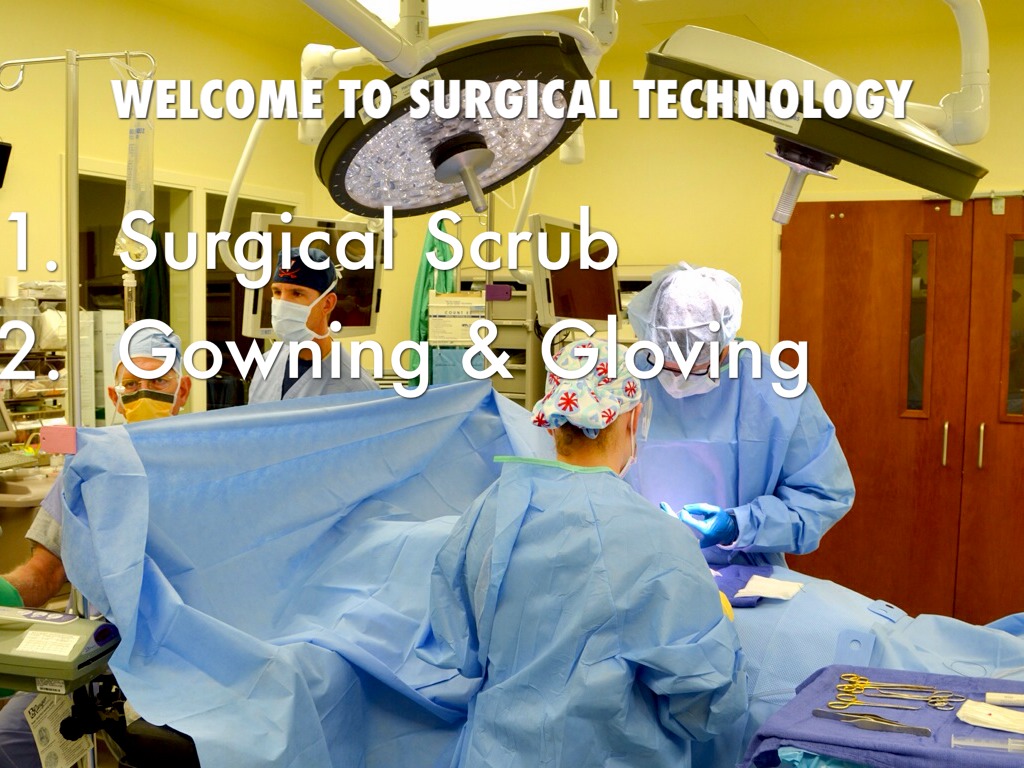
Surgical instruments and equipment are the tools of the trade for surgical technologists. They are essential for performing a wide range of surgical procedures, from simple to complex. Understanding the different types of instruments, their functions, and proper handling is crucial for ensuring patient safety and successful surgical outcomes.
Categorization of Surgical Instruments and Equipment
Surgical instruments and equipment are categorized based on their function and purpose. Here is a table summarizing some common categories:
| Category | Instruments/Equipment | Uses and Functions |
|---|---|---|
| Cutting | Scalpels, scissors, razors, electrosurgical units | Incising, dissecting, and excising tissue |
| Clamping and Grasping | Hemostats, forceps, clamps | Controlling bleeding, grasping tissue, and holding instruments |
| Retracting | Retractors, hooks | Holding back tissue and organs to provide a clear surgical field |
| Suturing | Needles, suture holders, needle drivers | Closing wounds and repairing tissue |
| Draining | Suction devices, drains | Removing fluids and blood from the surgical site |
| Other | Bone saws, drills, surgical lasers, endoscopes | Performing specific surgical procedures |
Importance of Proper Handling, Sterilization, and Maintenance
Proper handling, sterilization, and maintenance of surgical instruments are critical for preventing infections, ensuring instrument longevity, and maintaining patient safety.
- Proper Handling: Instruments should be handled with care to avoid damage. This includes using appropriate techniques for grasping, holding, and passing instruments.
- Sterilization: Instruments must be sterilized before each surgical procedure to eliminate any potential contaminants. Sterilization methods include steam sterilization, ethylene oxide sterilization, and hydrogen peroxide plasma sterilization.
- Maintenance: Regular maintenance, including cleaning, lubrication, and sharpening, is essential for ensuring instrument functionality and extending their lifespan.
Types of Surgical Procedures and Instruments Used
The specific instruments used in a surgical procedure depend on the type of surgery being performed. Here are some examples:
- Laparoscopic Surgery: This minimally invasive procedure involves using small incisions and specialized instruments inserted through a laparoscope. Instruments commonly used in laparoscopic surgery include graspers, dissectors, cautery devices, and trocars.
- Cardiothoracic Surgery: This type of surgery involves the heart and lungs. Instruments used in cardiothoracic surgery include heart-lung machines, clamps, retractors, and specialized suture materials.
- Neurosurgery: This type of surgery involves the brain and spinal cord. Instruments used in neurosurgery include microsurgical instruments, specialized clamps, and retractors.
- Orthopedic Surgery: This type of surgery involves the bones, joints, and ligaments. Instruments used in orthopedic surgery include saws, drills, implants, and specialized clamps.
- General Surgery: This type of surgery encompasses a wide range of procedures, including appendectomies, cholecystectomies, and hernia repairs. Instruments used in general surgery include scalpels, scissors, clamps, retractors, and suture materials.
Surgical Procedures
Surgical procedures are the core of surgical technology, and surgical technologists play a vital role in ensuring these procedures are performed safely and effectively. This section will explore various surgical procedures, the role of the surgical technologist in each, and the essential steps involved in preparing for and assisting during these procedures.
Types of Surgical Procedures
Surgical procedures can be broadly categorized based on their purpose, complexity, and the body system involved. Some common examples include:
- General Surgery: This category encompasses a wide range of procedures involving the abdominal cavity, including appendectomy, cholecystectomy, hernia repair, and colon resection.
- Cardiothoracic Surgery: Procedures involving the heart and lungs, such as coronary artery bypass surgery, valve replacement, and lung transplantation.
- Neurosurgery: Procedures involving the brain, spinal cord, and peripheral nerves, such as tumor removal, spinal fusion, and aneurysm repair.
- Orthopedic Surgery: Procedures involving bones, joints, and ligaments, such as hip replacement, knee replacement, and fracture repair.
- Ophthalmic Surgery: Procedures involving the eye, such as cataract surgery, LASIK, and retinal detachment repair.
- Plastic Surgery: Procedures involving the reconstruction or alteration of tissues, such as breast augmentation, facelifts, and burn reconstruction.
Role of the Surgical Technologist in Surgical Procedures
Surgical technologists are integral members of the surgical team and play a critical role in ensuring the smooth and safe execution of surgical procedures. Their responsibilities include:
- Preparing the Operating Room: This involves setting up the sterile field, preparing instruments and equipment, and ensuring the availability of necessary supplies.
- Assisting the Surgeon: This includes passing instruments, retracting tissues, and maintaining a sterile field.
- Maintaining Sterility: Surgical technologists are responsible for maintaining a sterile environment to prevent infection. This involves adhering to strict sterile techniques and protocols.
- Managing Specimens: Surgical technologists are responsible for handling and labeling tissue specimens for pathological examination.
- Documentation: Surgical technologists document the procedure, including the instruments used, the duration of the surgery, and any complications that may have occurred.
Preparing for Surgical Procedures
Prior to the start of a surgical procedure, the surgical technologist plays a crucial role in ensuring everything is ready. This includes:
- Reviewing the Patient’s Chart: This includes reviewing the patient’s medical history, allergies, and any previous surgeries.
- Gathering Necessary Supplies: The surgical technologist gathers all necessary instruments, equipment, and supplies based on the type of procedure being performed.
- Setting Up the Operating Room: This includes preparing the sterile field, setting up the surgical table, and ensuring the availability of necessary lighting and equipment.
- Preparing the Patient: This includes assisting with the patient’s positioning, draping, and prepping the surgical site.
Assisting During Surgical Procedures
During the procedure, the surgical technologist’s role is dynamic and essential. They:
- Pass Instruments to the Surgeon: The surgical technologist anticipates the surgeon’s needs and efficiently passes instruments and supplies.
- Retract Tissues: The surgical technologist uses retractors to hold back tissues and provide the surgeon with a clear view of the surgical field.
- Maintain Sterility: The surgical technologist maintains a sterile field by ensuring that all personnel and instruments remain sterile throughout the procedure.
- Monitor the Patient: The surgical technologist monitors the patient’s vital signs and reports any changes to the surgeon.
- Assist with Closure: The surgical technologist assists with the closure of the surgical wound, including suturing, stapling, and applying dressings.
Communication and Collaboration
Effective communication and collaboration are paramount in the operating room. The surgical technologist must communicate clearly and concisely with the surgeon, the anesthesiologist, and other members of the surgical team. This includes:
- Anticipating the Surgeon’s Needs: The surgical technologist should anticipate the surgeon’s needs and prepare instruments and supplies in advance.
- Reporting any Changes in the Patient’s Condition: The surgical technologist should immediately report any changes in the patient’s vital signs or condition to the surgeon.
- Confirming the Count of Instruments and Sponges: The surgical technologist is responsible for ensuring that all instruments and sponges used during the procedure are accounted for.
- Providing Clear and Concise Information: The surgical technologist should communicate clearly and concisely with all members of the surgical team.
Professional Development: Intro To Surgical Technology
In the dynamic field of surgical technology, continuous learning and professional development are essential for staying current with advancements, enhancing skills, and advancing career opportunities. Surgical technologists must be committed to ongoing education and professional growth to ensure they provide the highest quality care to patients.
Continuing Education
Continuing education is vital for surgical technologists to maintain their competence and stay informed about the latest advancements in surgical techniques, instruments, and technologies. It also helps them adapt to evolving patient needs and healthcare regulations.
- Conferences and Workshops: Attending conferences and workshops allows surgical technologists to network with peers, learn from experts, and gain insights into emerging trends in the field. These events often offer hands-on training and opportunities to participate in interactive sessions.
- Online Courses and Webinars: Online learning platforms and webinars provide convenient and flexible ways to acquire new knowledge and skills. They offer a wide range of topics, from surgical procedures to infection control, and can be accessed at any time.
- Journal Articles and Publications: Staying up-to-date with the latest research and clinical practice guidelines is crucial for surgical technologists. Reading peer-reviewed journal articles and professional publications keeps them informed about new technologies, techniques, and best practices.
Certifications and Professional Organizations
Certifications and professional organizations play a significant role in advancing the professional standing and credibility of surgical technologists. They provide opportunities for recognition, networking, and professional development.
Professional Organizations
- Association of Surgical Technologists (AST): The AST is the largest professional organization for surgical technologists, offering a range of resources, including certification exams, continuing education programs, and advocacy efforts. The AST advocates for the profession, sets standards for surgical technology education and practice, and provides support for its members.
- National Board of Surgical Technology and Surgical Assisting (NBSTSA): The NBSTSA is a non-profit organization that administers certification exams for surgical technologists and surgical assistants. Passing the NBSTSA certification exam demonstrates a high level of knowledge and skills, enhancing professional credibility and career opportunities.
Certifications
- Certified Surgical Technologist (CST): The CST certification is a nationally recognized credential that signifies a surgical technologist’s competence and commitment to professional standards. It is awarded by the NBSTSA and requires passing a rigorous exam.
- Certified Surgical First Assistant (CSFA): The CSFA certification is another credential offered by the NBSTSA, recognizing the advanced skills and knowledge of surgical first assistants. It requires a combination of education, experience, and successful completion of a certification exam.
Career Advancement
Professional development is crucial for advancing career opportunities in surgical technology. Surgical technologists who demonstrate a commitment to continuous learning and professional growth are highly sought after by healthcare facilities.
- Increased Job Security: In a competitive healthcare job market, certifications and ongoing education can enhance job security. Employers often prioritize candidates who have demonstrated their commitment to professional development and staying current with industry standards.
- Higher Salary Potential: Certified surgical technologists and those with advanced training may be eligible for higher salaries and bonuses. Employers may offer incentives to encourage their staff to pursue professional development and maintain their expertise.
- Leadership Roles: Professional development can open doors to leadership roles in surgical technology departments. Surgical technologists who demonstrate expertise, leadership qualities, and a commitment to professional growth are often considered for positions such as surgical technology supervisors, educators, or clinical coordinators.
Ending Remarks
As we conclude our exploration of intro to surgical technology, it becomes evident that this field demands a unique blend of technical proficiency, knowledge, and teamwork. From the meticulous preparation of the operating room to the critical role in assisting surgeons, surgical technologists are vital partners in ensuring patient safety and positive outcomes. Their dedication and expertise contribute significantly to the success of modern surgical procedures.
